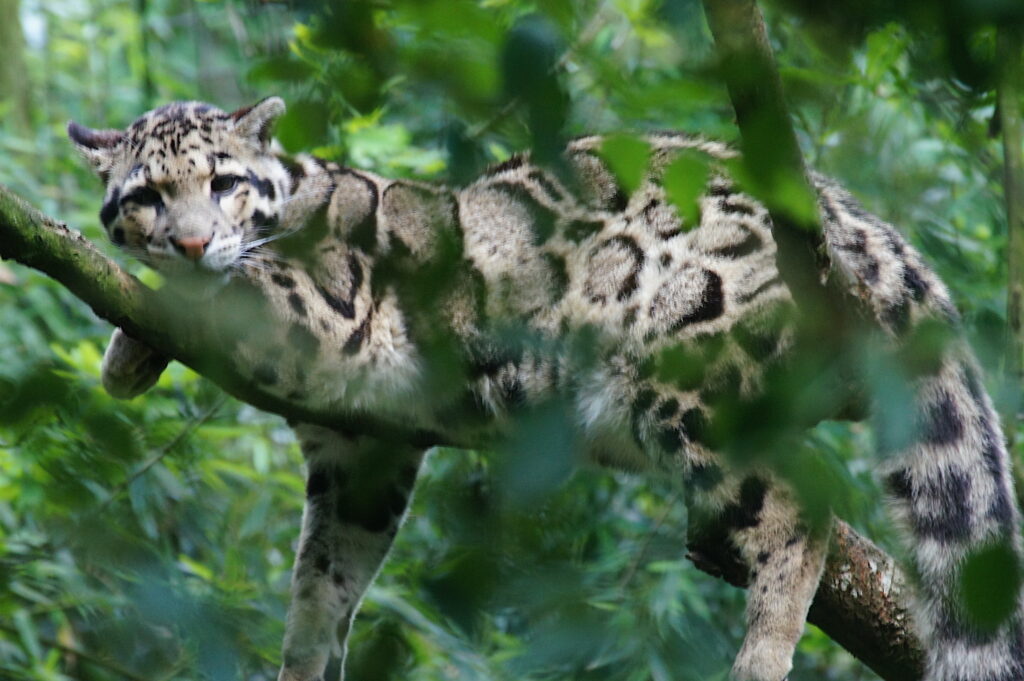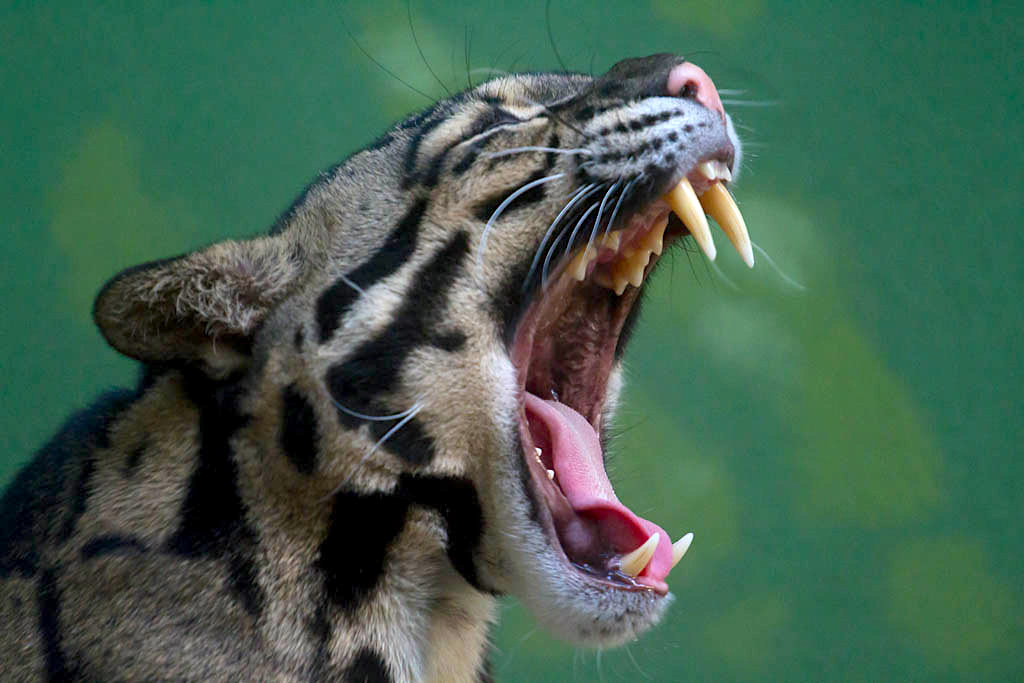The clouded leopards, elegant denizens of forest canopies, face a precarious decline amid the dual threats of habitat loss and poaching. The intricate dance of survival takes a darker turn as new genomic evidence reveals alarming levels of inbreeding and genetic mutations, casting shadows on the long-term existence of these elusive creatures.
In the canvas of conservation, captive breeding programs emerge as a beacon of hope, attempting to capture the elusive essence of clouded leopards. However, the encroachment of forest loss further fragments their genetic tapestry in the wild.
Despite these challenges, the insights gained from the genetic intricacies paint a tapestry for conservationists—a delicate blend of enhancing protected areas and orchestrating captive-breeding symphonies to ensure optimal genetic diversity for the survival of these magnificent creatures.
“Murmurs of the Canopy: Clouded Leopards, Evolutionary Marvels in Jeopardy”
Cloaked in patterns that mimic the forest’s shadows and gifted with remarkable tree-climbing abilities, clouded leopards emerge as marvels of evolution, finely tuned for a feline life amidst the treetops. However, the unfolding story takes a sobering turn. A recent genetic study lays bare the toll of habitat loss and poaching, delivering a severe blow to the genetic diversity of these medium-sized cats, jeopardizing their long-term survival in the wild.
Published in Science Advances, the genomic analysis reveals alarming levels of inbreeding, limited genetic diversity, and the presence of mutations that pose a threat to reproduction. The authors emphasize that the accumulation of these unfavorable genetic features, spanning thousands of years, has been further intensified by recent sharp declines in population triggered by human activity.
“Habitat fragmentation has likely accelerated the accumulation of deleterious mutations due to high levels of inbreeding,” states the study. “Elevated levels of inbreeding and harmful genes serve as critical indicators of the genetic crisis impacting clouded leopard conservation, emphasizing the urgent need for action to ensure the survival of these imperiled big cat species.”

Rustling Secrets of the Canopy: Clouded Leopards, Nature’s Petite Enigmas
Until 2006, clouded leopards were thought to be a single species. However, advancements in DNA analysis led scientists to reassess, revealing distinct differences between the populations on the Asian mainland and those on the Southeast Asian islands. Consequently, the mainland clouded leopard (Neofelis nebulosa) ranges from Nepal to southern China, extending southward to Peninsular Malaysia. On the other hand, the Sunda clouded leopard (Neofelis diardi) is exclusive to the islands of Borneo and Sumatra.
Both species now hold a vulnerable status on the IUCN Red List, facing a decline in numbers due to habitat loss, indiscriminate snaring, and direct killing. Over the past two decades, about one-third of their habitat has disappeared. The illegal wildlife trade, driven by the demand for their distinctive plush and cloud-patterned coats that provide effective camouflage in forested environments, worsens these challenges.
Clouded leopards, like other large felines, need extensive territories and live at low population densities. The fragmentation of canopy cover, a consequence of their arboreal lifestyle, severely hampers their ability to disperse.
Despite being the smallest among the world’s seven big cat species, clouded leopards boast the longest canines relative to body size. This feature enables them to swiftly secure prey in the canopy by delivering a powerful bite to the back of the neck. Adaptations such as broad paws, rotating ankles, a camouflaged coat, and an exceptionally long tail highlight their specialization as forest canopy dwellers.

King of the jungle, the regal lion, the majestic tiger, and the elusive clouded leopard.

‘Genetic Quandary’
Nobuyuki Yamaguchi, a wildlife biologist at the University Malaysia Terengganu, not affiliated with the study, praised the researchers for their adept use of genetic samples, recognizing the complexity of acquiring and analyzing them on such a comprehensive scale. Yamaguchi emphasized the study’s implications, highlighting the uphill struggle conservationists face in revitalizing endangered wild populations of clouded leopards.
He cautioned that the high levels of inbreeding and low genetic diversity uncovered in the study pose significant challenges for species conservation. Yamaguchi suggested that reproductive difficulties and inbreeding-related issues may impede population recovery and genetic health in the wild, emphasizing the need for the conservation community to prioritize identified strongholds with known wild populations, with Malaysia playing a pivotal role as the only country hosting both clouded leopard species.
While the newfound insights into clouded leopards’ evolutionary history and genetic diversity aim to inform more effective conservation strategies, the study’s disconcerting revelations highlight the severity of the “genetic crisis” confronting clouded leopard preservation. Breeding clouded leopards in captivity presents challenges, with instances of violent conflicts and even lethal encounters among selected mating pairs. Simultaneously, habitat loss has fragmented wild populations, limiting genetic mixing in their natural environments.
In response, the study advocates for immediate measures to safeguard and enhance genetic diversity in both wild and captive populations. This includes strategic planning for protected areas and the implementation of carefully curated captive-breeding programs.

